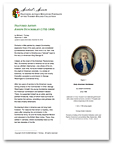| |
Anglo-American Artist: Joseph Dunckerley
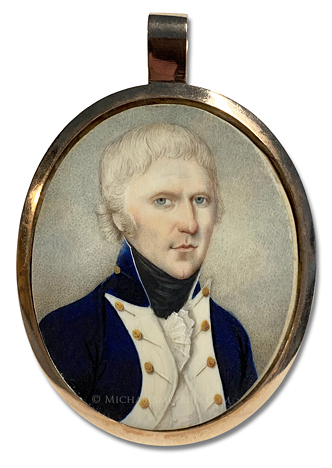

Lieutenant of the British Royal Navy
Painted in the British West Indies
Anglo-American
circa 1790-1795
by Joseph Dunckerley (1752-1806)
1 7/8 x 2 1/4 inches (sight)
watercolor on ivory; housed under glass in a gilded copper pendant frame
(photographed without its glass lens in place, so as to
allow a clearer view of the portrait)
About the Artist: Joseph Dunckerley (alternatively spelled as Dunkerley or Dunkerly in some sources) was born in London in 1752, the son of a London jeweler. He arrived to Boston, Massachusetts in 1774 with the British Army's 38th Regiment of Foot, in which he served as a private. (The infantry regiment had been sent to Boston in response to colonial rebellion and, more specifically, the Boston Tea Party.) He deserted the British Army in January, 1776 and, subsequently, in May 1776, joined the Massachusetts Company of Artillery, in which he served as a 2nd lieutenant. Later, in March, 1777, he received a commission in George Washington's Continental Army, as a 2nd lieutenant and adjutant. Concurrent with his military service, he is known to have been painting portrait miniatures in Boston, as early as 1776. He was also active in freemasonry, having joined the St. Andrew's Lodge in 1776. (He remained active in freemasonry for 30 years). In May, 1778, he resigned his commission in the Continental Army and remained in Boston, where he became increasingly active as a painter. In 1787, he departed Boston and relocated his family to Jamaica (then a British colony), where he continued to paint portrait miniatures. In Jamaica, he initially settled in the port town of Falmouth, but he later moved to Kingston, having been documented there as early as 1794. In 1796, during a period of unrest and uprisings, he joined the Jamaica Militia, serving as a lieutenant and adjutant in the St. Andrew's Regiment. He died in Kingston in May 1806, and was buried in Falmouth on May 28, 1806. Dunckerley's early miniatures are somewhat quirky and tentative, but remain hugely popular with collectors of folk art and early Americana. His later works have much improved depth and modeling. Listed by Barratt and Zabar (page 91), Blättel (pages 314, 315), Bolton (page 38), Bolton & Wehle (pages 79, 80), Fielding (page 257), Johnson (page 115), and Schidlof (page 225).
Other portraits in the Tormey-Holder Collection by Joseph Dunckerley
(click photos for larger views and additional information):
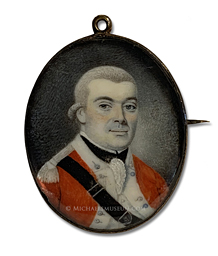
Capt. Thomas Watt (1756-1839)
of the 71st Regiment of Foot of the British Army
during the American Revolutionary War
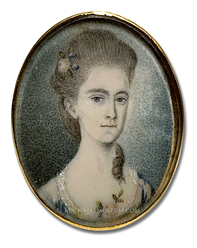
Miss Hepzibah Hall (1764-1836),
Later Mrs. John Browne Fitch
of Medford, Massachusetts
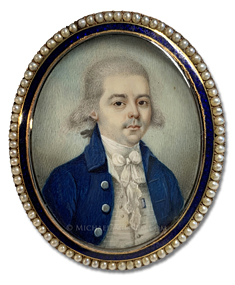
Early American Gentleman
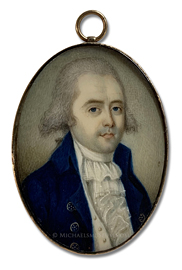
Early American Gentleman

Early American Gentleman
with the Initials "W.W."
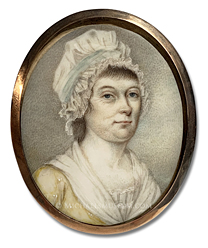
Late Eighteenth Century Lady
Wearing a Bonnet
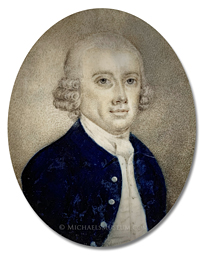
James Dunckerley (1728-1802),
Georgian Era Jeweler and Father of the Artist
|
|


